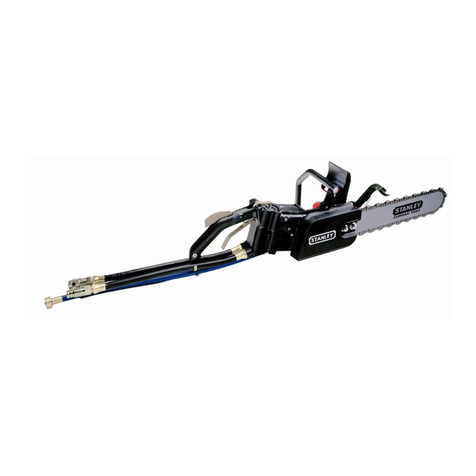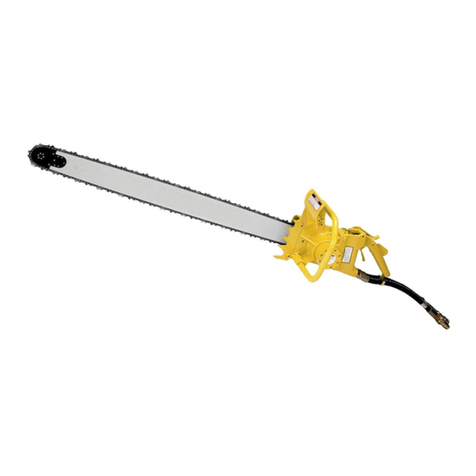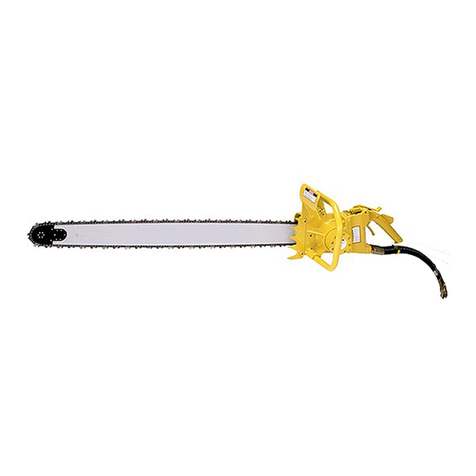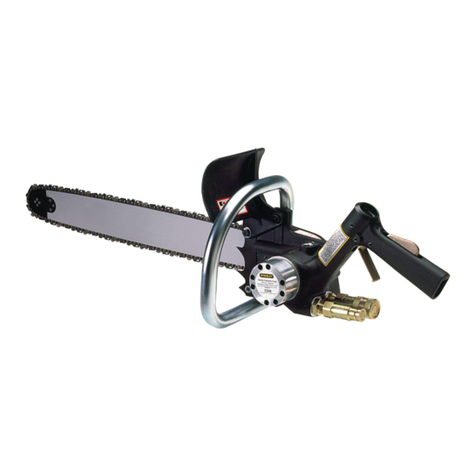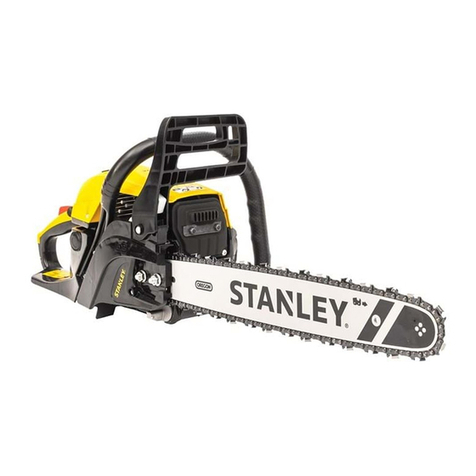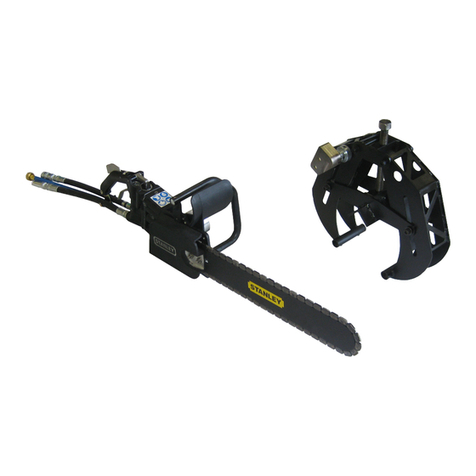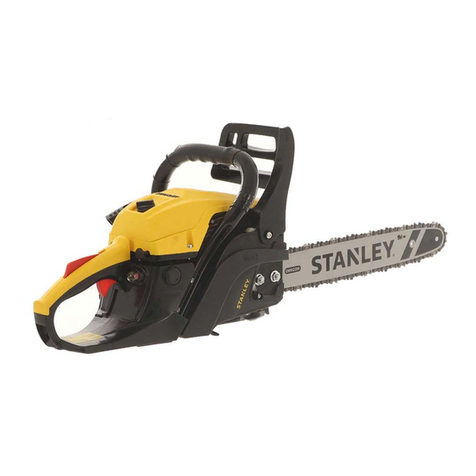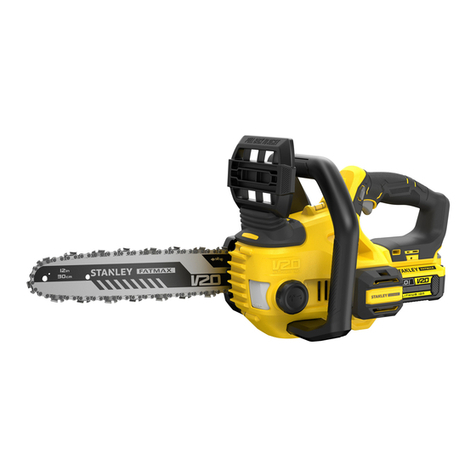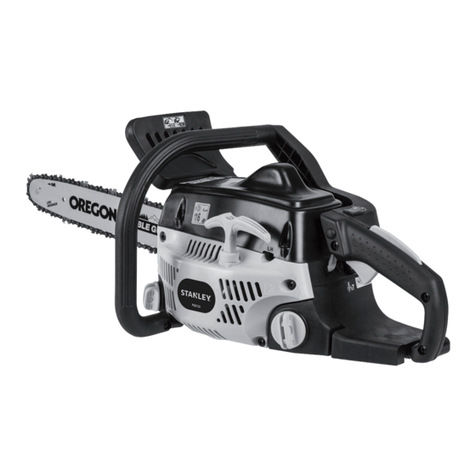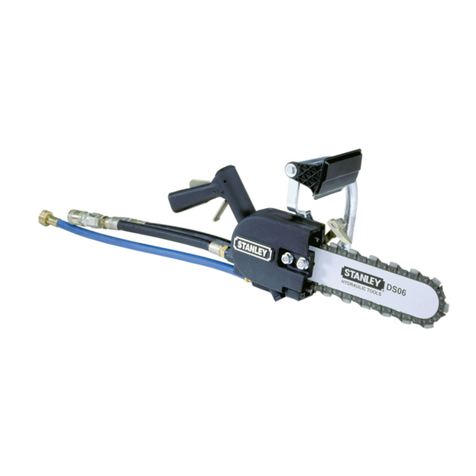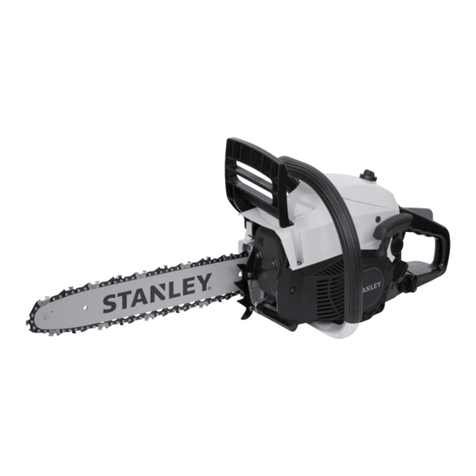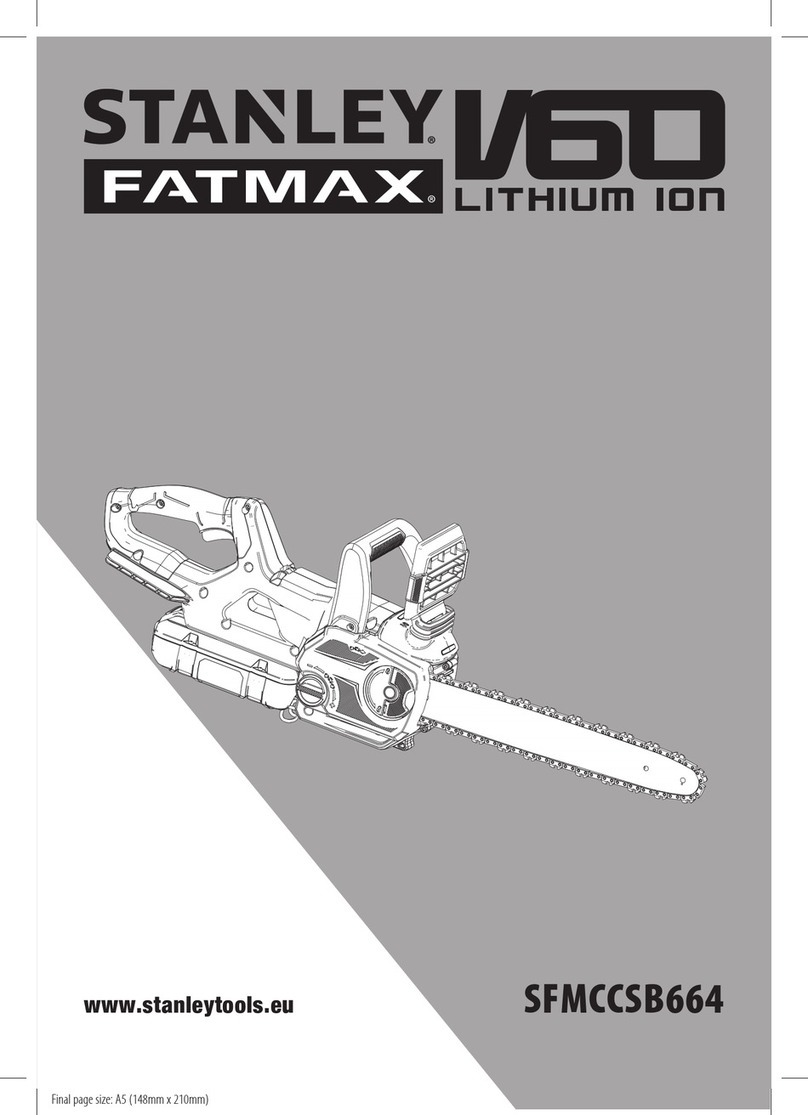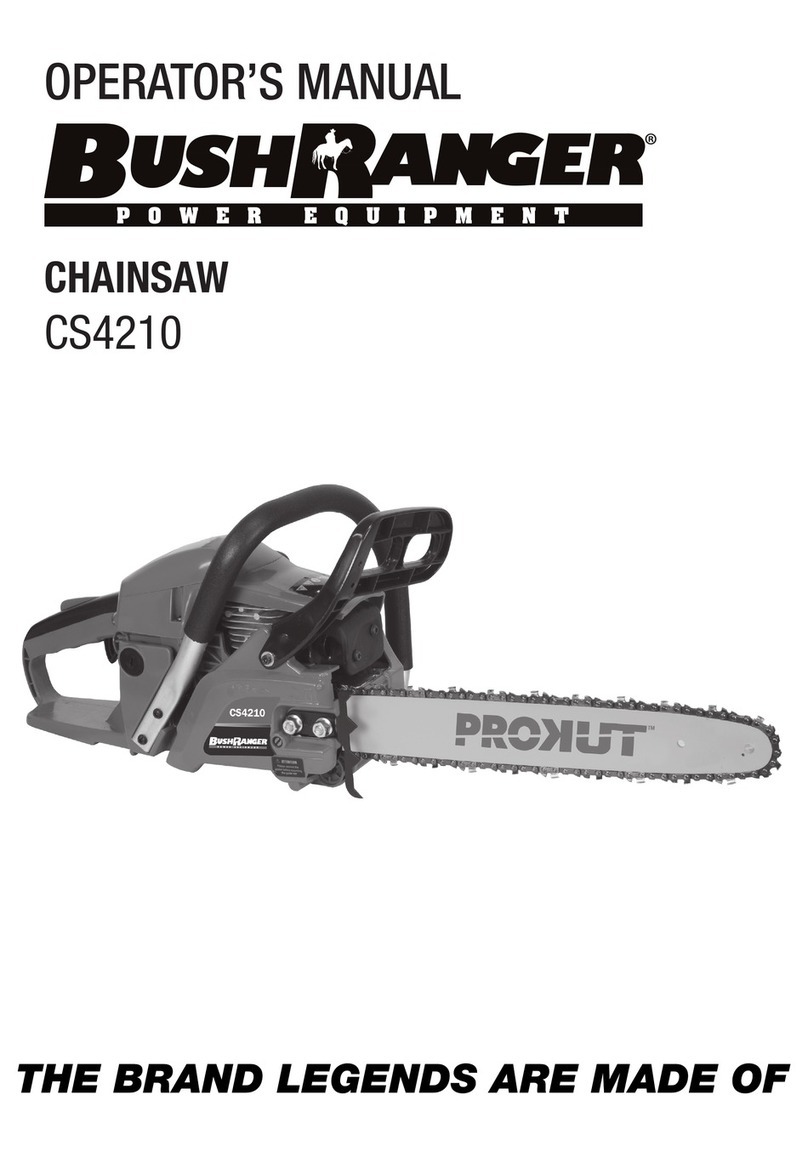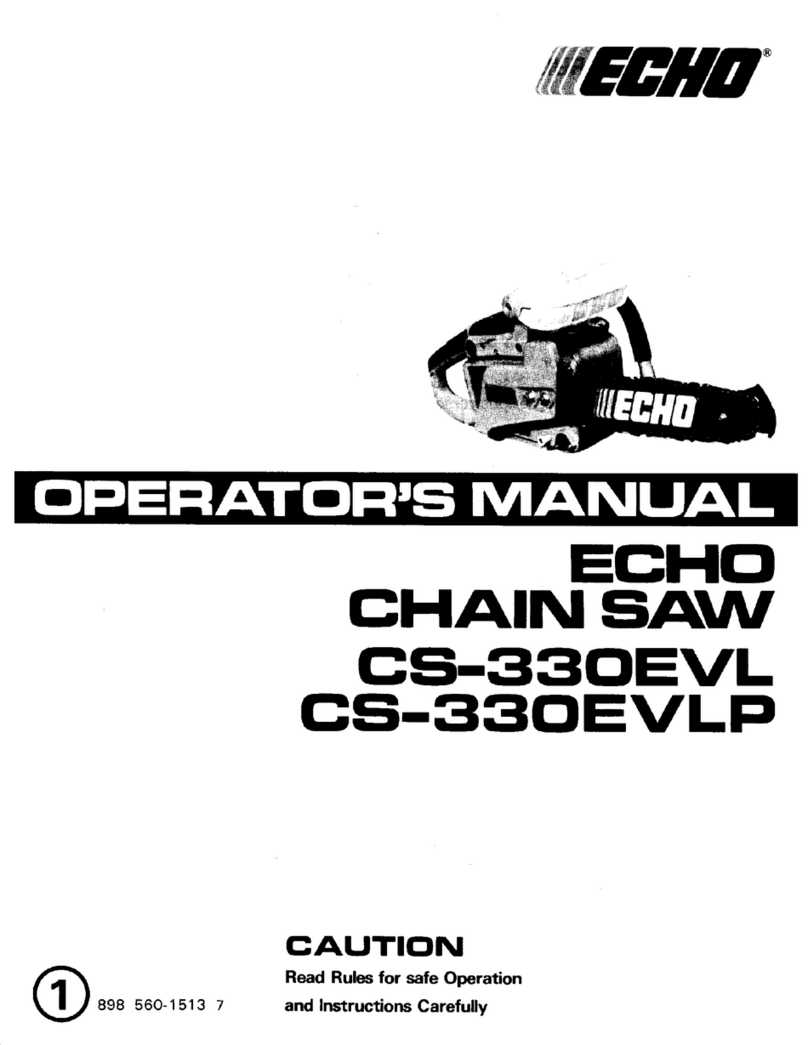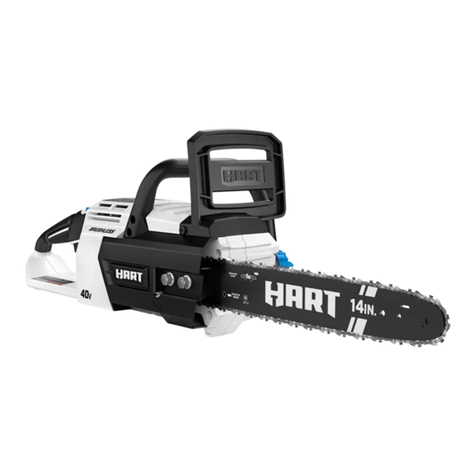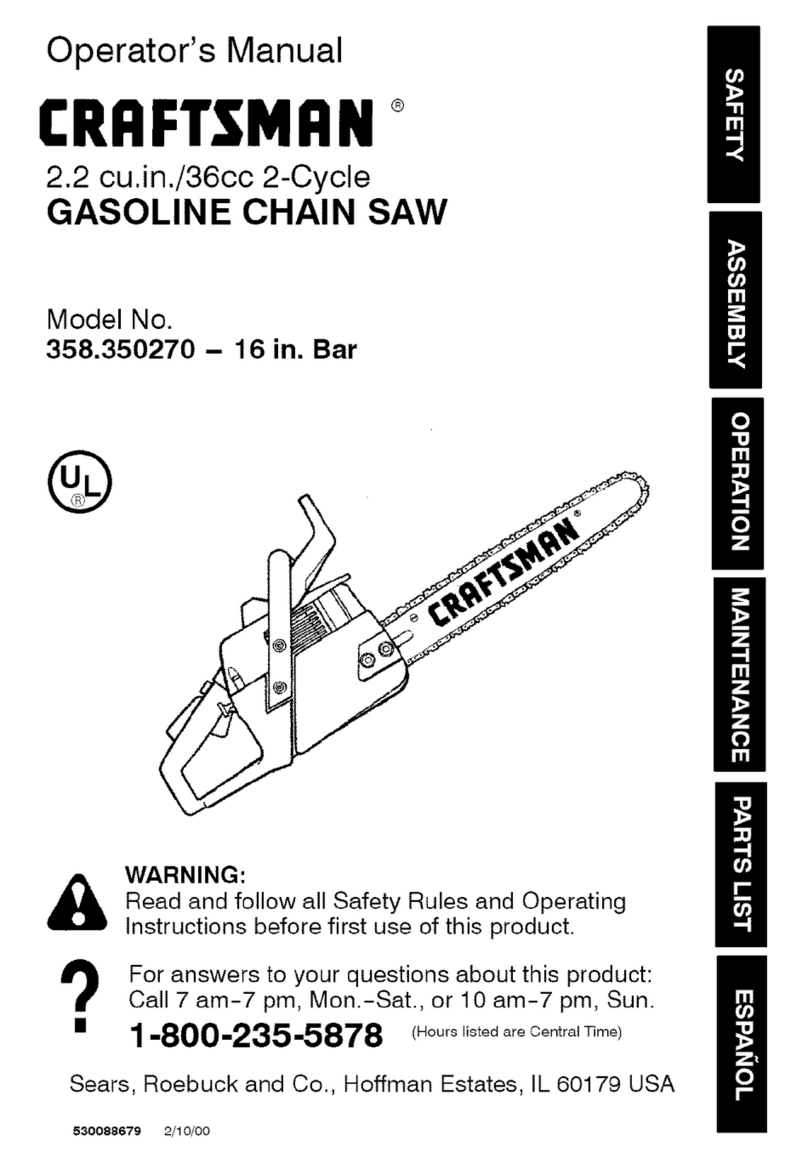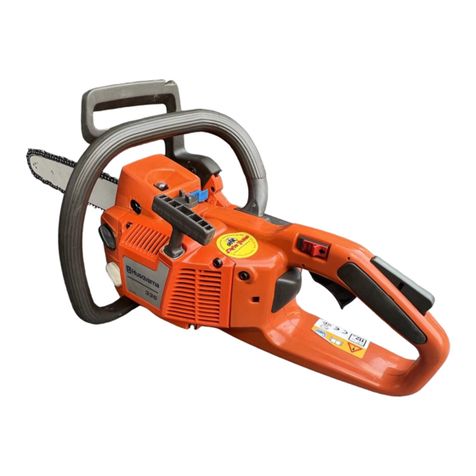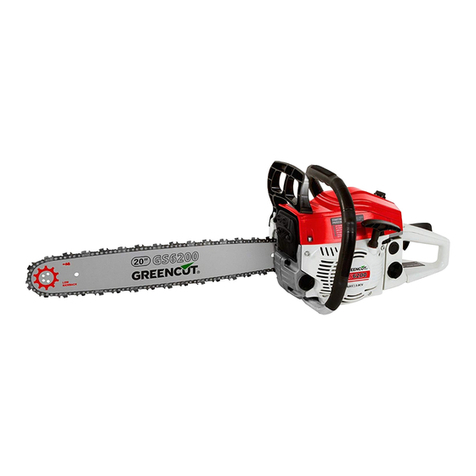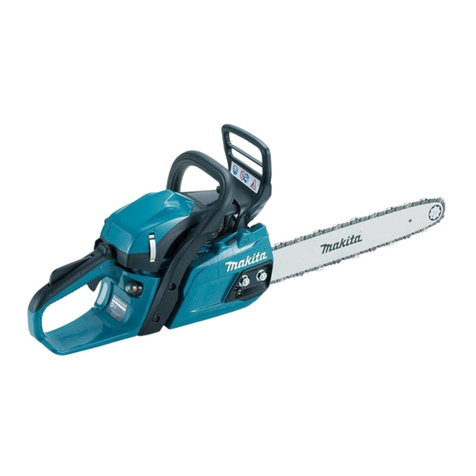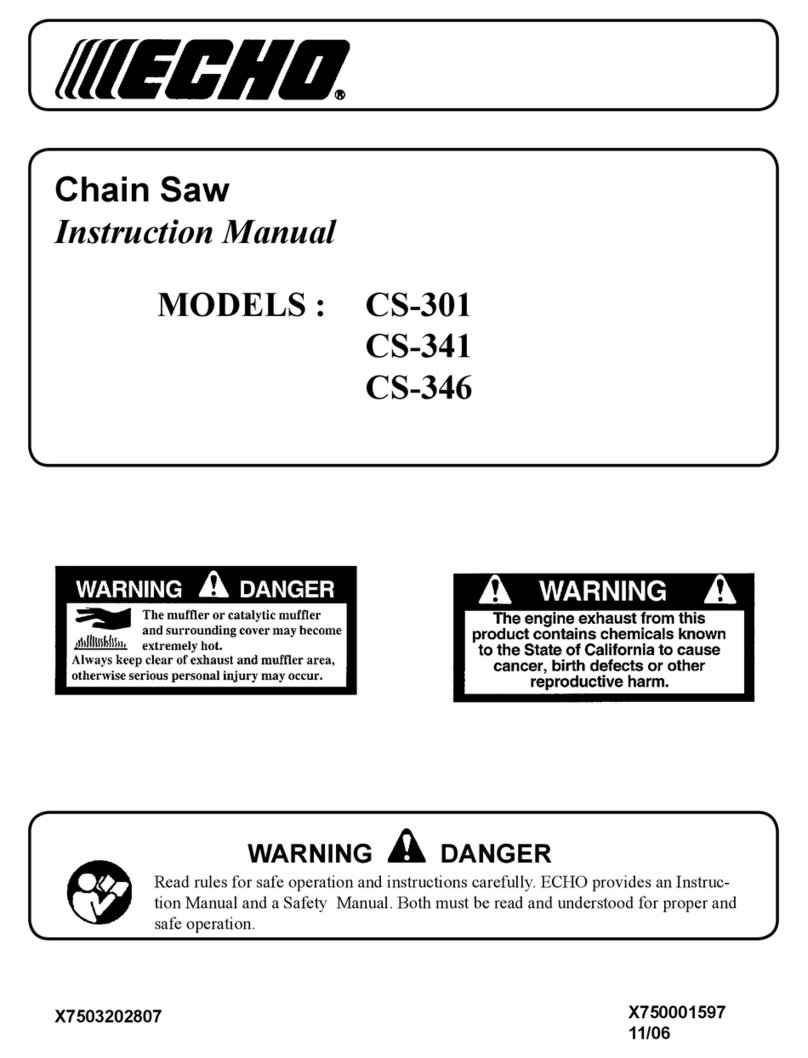
6
ENGLISH
General Chain Saw Safety Warnings
a ) Keep all parts of the body away from the saw chain
when the chain saw is operating. Before you start
the chain saw, make sure the saw chain is not
contacting anything. A moment of inattention while
operating chain saws may cause entanglement of your
clothing or body with the saw chain.
b ) Always hold the chain saw with your right hand
on the rear handle and your left hand on the front
handle. Holding the chain saw with a reversed hand
configuration increases the risk of personal injury and
should never be done.
c ) Hold the chain saw by insulated gripping surfaces
only, because the saw chain may contact hidden
wiring. Saw chains contacting a "live" wire may make
exposed metal parts of the chain saw "live" and could give
the operator an electric shock.
d ) Wear eye protection. Further protective equipment
for hearing, head, hands, legs and feet is
recommended. Adequate protective equipment will
reduce personal injury from flying debris or accidental
contact with the saw chain.
e ) Do not operate a chain saw in a tree, on a ladder, from
a rooftop, or any unstable support. Operation of a chain
saw in this manner could result in serious personal injury.
f ) Always keep proper footing and operate the chain
saw only when standing on fixed, secure and level
surface. Slippery or unstable surfaces may cause a loss of
balance or control of the chain saw.
g ) When cutting a limb that is under tension, be alert
for spring back. When the tension in the wood fibres is
released, the spring loaded limb may strike the operator
and/or throw the chain saw out of control.
h ) Use extreme caution when cutting brush and
saplings. The slender material may catch the saw chain
and be whipped toward you or pull you off balance.
i ) Carry the chain saw by the front handle with the
chain saw switched off and away from your body.
When transporting or storing the chain saw, always
fit the guide bar cover. Proper handling of the chain saw
will reduce the likelihood of accidental contact with the
moving saw chain.
j ) Follow instructions for lubricating, chain tensioning
and changing the bar and chain. Improperly tensioned
or lubricated chain may either break or increase the
chance for kickback.
improperly or at temperatures outside the specified range
may damage the battery and increase the risk offire.
Service
a ) Have your power tool serviced by a qualified repair
person using only identical replacement parts. This
will ensure that the safety of the power tool ismaintained.
b ) Never service damaged battery packs. Service
of battery packs should only be performed by the
manufacturer or authorized serviceproviders.
c ) Disconnect the plug from the power source and/
or remove the battery pack, if detachable, from
the power tool before making any adjustments,
changing accessories, or storing power tools. Such
preventive safety measures reduce the risk of starting the
power toolaccidentally.
d ) Store idle power tools out of the reach of children
and do not allow persons unfamiliar with the power
tool or these instructions to operate the power tool.
Power tools are dangerous in the hands of untrainedusers.
e ) Maintain power tools and accessories. Check for
misalignment or binding of moving parts, breakage
of parts and any other condition that may affect the
power tool’s operation. If damaged, have the power
tool repaired before use. Many accidents are caused by
poorly maintained powertools.
f ) Keep cutting tools sharp and clean. Properly
maintained cutting tools with sharp cutting edges are less
likely to bind and are easier tocontrol.
g ) Use the power tool, accessories and tool bits etc.
in accordance with these instructions, taking into
account the working conditions and the work to be
performed. Use of the power tool for operations different
from those intended could result in a hazardoussituation.
h ) Keep handles and grasping surfaces dry, clean and
free from oil and grease. Slippery handles and grasping
surfaces do not allow for safe handling and control of the
tool in unexpectedsituations.
Battery Tool Use and Care
a ) Recharge only with the charger specified by the
manufacturer. A charger that is suitable for one type
of battery pack may create a risk of fire when used with
another batterypack.
b ) Use power tools only with specifically designated
battery packs. Use of any other battery packs may create
a risk of injury andfire.
c ) When battery pack is not in use, keep it away from
other metal objects, like paper clips, coins, keys,
nails, screws or other small metal objects, that can
make a connection from one terminal to another.
Shorting the battery terminals together may cause burns
or afire.
d ) Under abusive conditions, liquid may be ejected
from the battery; avoid contact. If contact
accidentally occurs, flush with water. If liquid
contacts eyes, additionally seek medical help. Liquid
ejected from the battery may cause irritation orburns.
e ) Do not use a battery pack or tool that is damaged
or modified. Damaged or modified batteries may exhibit
unpredictable behaviour resulting in fire, explosion or risk
ofinjury.
f ) Do not expose a battery pack or tool to fire or
excessive temperature. Exposure to fire or temperature
above 130°C may causeexplosion.
g ) Follow all charging instructions and do not charge
the battery pack or tool outside the temperature
range specified in the instructions. Charging
